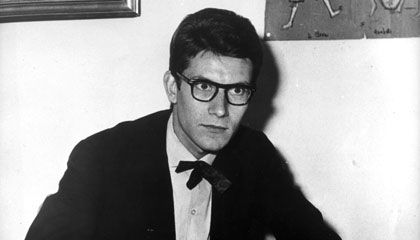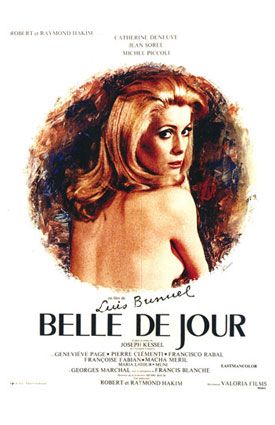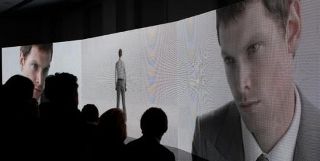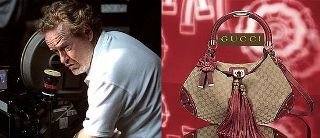Given some intriguing alignments, it’s time to consider film in the context of luxury storytelling. And there are two present time movements that speak to this abrupt emergence.
And there’s a personal winding, to the concept of film making and luxury brand storytelling for me.
Part of the space that I work in is motion picture and theatrical identity development. I started doing that decades ago on the first project — Apocalypse Now, for Francis Ford Coppola. He’d seen something I’d designed. And the reach began. That project ended up being a kind of art-directed amalgam. I created solutions, never copied them, shipped off the originals, drawn mostly on hand made Japanese washi, and then it was out. And the result — a kind of mixed up interpretation of the drawings, cobbled together. But that was that — the beginning of that story for me — learning about film making, imagery, context, brand and storytelling. Probably about 400 different design projects or more, since then.

Ridley Scott
I worked with Ridley Scott on Black Rain, as well as 1492, The Conquest of Paradise — and I’d submitted work for Gladiator, in a pitch to win that project as a theatrical identity designer. And there was more of a partnership with his brother, Tony Scott, working on Top Gun, Days of Thunder and The Last Boy Scout, as well as creating the identity for his company, Tony Scott Films. Now he’s partnered with Ridley in a theatrical mega-directorial house. And they’re busy.
Background, then. The point, for me, is two fold — one, thinking about film production and storytelling — and the brand of experience. (http://blog.girvin.com/?p=645) And two, the concept of film, design and brand. There are two layers to the story of the latter part of this exploration. And since I had the connection working with YSL, I’ll examine that as an opening.
The first. Storytelling and the brand — Monsieur Yves Saint Laurent, in film.
This, the man; this, the evolution of the brand and this, the creative direction of Stefano Pilati for YSL.

The real opening gesture to film and fashion, conceptually, I’d put at Yves Saint Laurent styling in Luis Buñuel’s film, Belle Du Jour, dressing — progressively provacatively, Catherine Deneuve, as she descends into the realm of her fantasy escape from dreary housewifery to the sultry working world of Parisian prostitution.

There are, as well, films that are made about him.
Elvis Mitchell comments, The New York Times, 1.7.2004 on two films speaking to his legacy, the dark mansion of YSL, as it were.
That heritage is not only referencing the early career of Saint Laurent, his childhood — ”That’s where I was happiest, among my family,” he mused in “YSL: His Life and Times“, one of two feature-length documentaries on the designer, but as well, his later and quintessentially darker and more laconic phases of creativity. ”YSL: 5 Avenue Marceau, 75116 Paris“, is the other — and though each has deficiencies, the works complement each other. There’s also some wonderful film, new to American audiences, like a popping black-and-white animated 1960’s piece and other period ads, and scenes depicting the designer’s fixation on, and appropriation of, androgyny in fashion, influencing 70’s glam sensibility.”
Monsieur Saint Laurent’s quiet, introspective meditations bespeak “a graceful melancholy. As pictures of a happy, round-faced infant are shown (he was born in 1936) — in contrast to the long, severe face with the slender glasses that many know — he remembers that he was so loved that his father’s last words were, ”Where’s Yves?” That gestures to the concept of depicting the creativity of the designer, his life.
But what of the concept of using film, a story, to convey the character of a collection? There’s been brand / fashion / film experiment: MANIFESTO. That was 2007/8; but there is a new move this season, last week, by YSL CEO, Valérie Hermann and creative director Stefano Pilati to take the story of a collection to dramatic filmic presentation.
Godfrey Deeny, writing from Paris, January 18th, 2008, comments on the prèmiere de cinema: “Yves Saint Laurent… whose super souper, video premiere, bohemian gallant cocktail and Lucullan dinner knocked the socks of any men’s fashion event we have witnessed in quite a while. The timing helped. YSL hand picked a few score of editors and writers arriving in Paris from the Milan season and mixed them with a bohemian rat pack of great French actors at a dreamily brilliant dinner in a newly restored aristocrat’s mansion.” And spectacular it must have been, given that “in 20 years in fashion this was probably the best catered “fashion” meal… courtesy of a truly great chef Jean Paul Vigato, Apicius.”
Earlier legacies endured –“YSL icon Catherine Deneuve sat at the main table, as did her daughter Chiara Mastroianni, mingling with the guests as scores of people took smoking breaks, a new French tradition.”
And Deeny references, as well, other film-making attempts to create brand stories in cinematic tableau: “showing collections on video is a dumb idea. Once, some 18 years ago, I ventured to a Grand Boulevard theatre to see a fashion clip by the greatest avant garde film maker of them all, Jean Luc Godard, custom made for Marithe et François Girbaud — disastrously naff, a weirdly angled reportage of the rear ends of models managing to look very depressed.”
That was then, this is now. “The YSL video, however, was pretty damned good”, to all reporting accounts. Directed by London independents Chris Sweeney and Sarah Chatfield, shot by Gostra Reiland, displayed on a triptych of screens and edited as “time bends in our memory of events – a day in the life of chiseled jawed yet oddly formal actor Simon Woods,” it was great way to show Pilati’s fall 2008 collection for YSL.
According to the New York Observer “Mr. Pilati has decided to show it off on the big screen. A representative for the fashion label said, “[the designer’s] idea is to make the experience of seeing a collection more intimate, to reduce the distance between the viewer and the collection.” The video installation, created with independent directors Chatfield and Sweeney of the London-based music video production company Colonel Blimp, http://www.colonelblimp.com/ will premiere this Wednesday (the 16th) in Paris alongside “customized showrooms of product.” Even more unconventionally, the video features British actor Simon Woods as the collection’s only model—a protagonist of sorts. Deeny — “Most actors make lousy models; Woods – is famous for playing the character of Gaius Octavian in the over the top TV series Rome – is pretty good, absorbing the space, working the camera angles, role-playing.

New York Observer
The three panels captured the curiously Kafka-like moment we in the West are living; an era where sub prime mortgages, multi-tasking, late payments and currency fluctuations make every one nervous.
“At one stage Woods splays his hand, almost beseechingly, on a glass wall, an image segued on the three panels in different outfits. It was an example of Pilati’s populist savvy, incessantly reaching new scales of action, to choose Woods, who “plays a curiously hedge fund version of Octavian, Julius Cesar’s adopted heir, by blood his grand nephew. In Rome, the series, he’s conniving, curl haired Oxbridge grad with a cape, in life he seems a guy who might play some properly major roles.
Woods moves well in the clothes, as he slides through a modern digital day, caught in high tech tunnels and cornered behind columns. He wears a neat tranche of Pilati’s best ideas: laser cut felt, curvy shouldered coats, knitted hounds tooth jackets and fabulous tie-dyed velvet dinner tuxes.” (MensStyle.com)
“The video let’s us use technology to strengthen the presentation. People can grasp the concept easily and get to feel the clothes. Plus, we put the show directly on the web so our reach is much greater“, explained Pilati. He, in the savvy tradition of YSL, remains a “canny fabric experimenter; like his tie-dyed velvet tuxedo jackets, which would work for rock star or prince.” Pilati understands that “something new is happening – that scarce resources, depleted energy stocks and exhausted planet means we are entering a new, low energy, slower moving, contemplative era. And his collection, and the event, reflected this. That’s why, Saint Laurent’s soiree seemed so much more in tune with anything we saw in Milan.” (MensStyle.com)
The leaning there is that the story of the brand, the collection, the creative — can be far better connected to the person, the community if it’s just that: the story. Pilati’s innovation, as I’d referenced in another study [http://blog.girvin.com/?p=663] is about building innovation into the reach to relationship. And that, perhaps, will be among his greatest achievements in vitalizing (as he has) the perhaps, once dark, YSL manse.
Part II.
There’s another layer to this observation, and that’s about the idea of the story, the brand, the film — as a kind of biographical reflection of the legacy of design, being recast, remade, as a gesture to glamour — the light, as well as the darker side, of luxury. According to Variety’s pun of the morning (buzzsugar.com), “Fox 2000 will fashion the story of the Gucci dynasty into a feature directing vehicle for Ridley Scott.” The movie will follow “the wild and glamorous story of the Gucci family in the 1970s and ’80s, when its 153 shops moved $500 million in product annually.”
Buzzsugar’s read, from Variety’s opening release –“The lives of fashion icons often seem wild and glamorous, but I had no idea how dramatic and intriguing this family’s story is. Apparently the story will focus on Maurizio Gucci, “the grandson of founder Guccio Gucci who emerged as the unlikely winner of a bloody power struggle to run the family business. Just when Maurizio was on the verge of his greatest success — a daring fashion show debuting the clothes of newcomer Tom Ford — his penchant for accumulating enemies caught up with him; Maurizio was gunned down in front of his Milan apartment in 1995.” Ridley will be good at orchestrating this kind of complex cultural experience — the styling alone will be noteworthy. Marcy Medina’s overview, Variety, reflects that — “Giannina Facio, Ridley Scott’s Costa Rican wife and the producer of the Gucci biopic film, revealed more details about the project on Wednesday night at pal Salma Hayek’s dinner for Sergio Rossi (interestingly enough, a Gucci Group brand) creative director Edmundo Castillo. The film will span from the Sixties to the Nineties, and expect to see original period pieces from Gucci’s archives.
“I have spoken to all of the family members except for Patricia because I want to make sure we make an authentic movie,” said Facio. “Of course, everyone wants to tell it from their point of view.” Facio said her husband’s greatest talent is for “totally creating a world in which you feel like you are there. He’s gonna do in the Eighties and Paris in the Nineties so well.” Gladiator, 1492, American Gangster, Hannibal, all attest to amazing production values and precise art direction. (Apple | Macintosh launch, too, might be another relevant example of incredible style…)

The project is currently stalled due to the writers’ strike, but Scott seems to have settled on a writer, the third scribe to work on the script, according to WWD. But: “Now does seem like a good time for a project like this with the writers strike going on; this stuff writes itself.” (buzzsugar.com)
Two paths, two legacies, two design traditions — an intermingling of message and media. One, a layering of the interpretation of genius, and finally a kind of redemptive extension of that thinking — YSL, the stylist for his icon, Deneuve in Belle Du Jour; his biographical renderings, and finally his newest representative Pilati’s interpretation of film, representation, collection and community. The other, the family, Gucci — and the telling of another saga, ranging big to the past and far into the future. For me, it’s all about this. All the work, really, it’s here:
What story shall be told?
tsg
—-